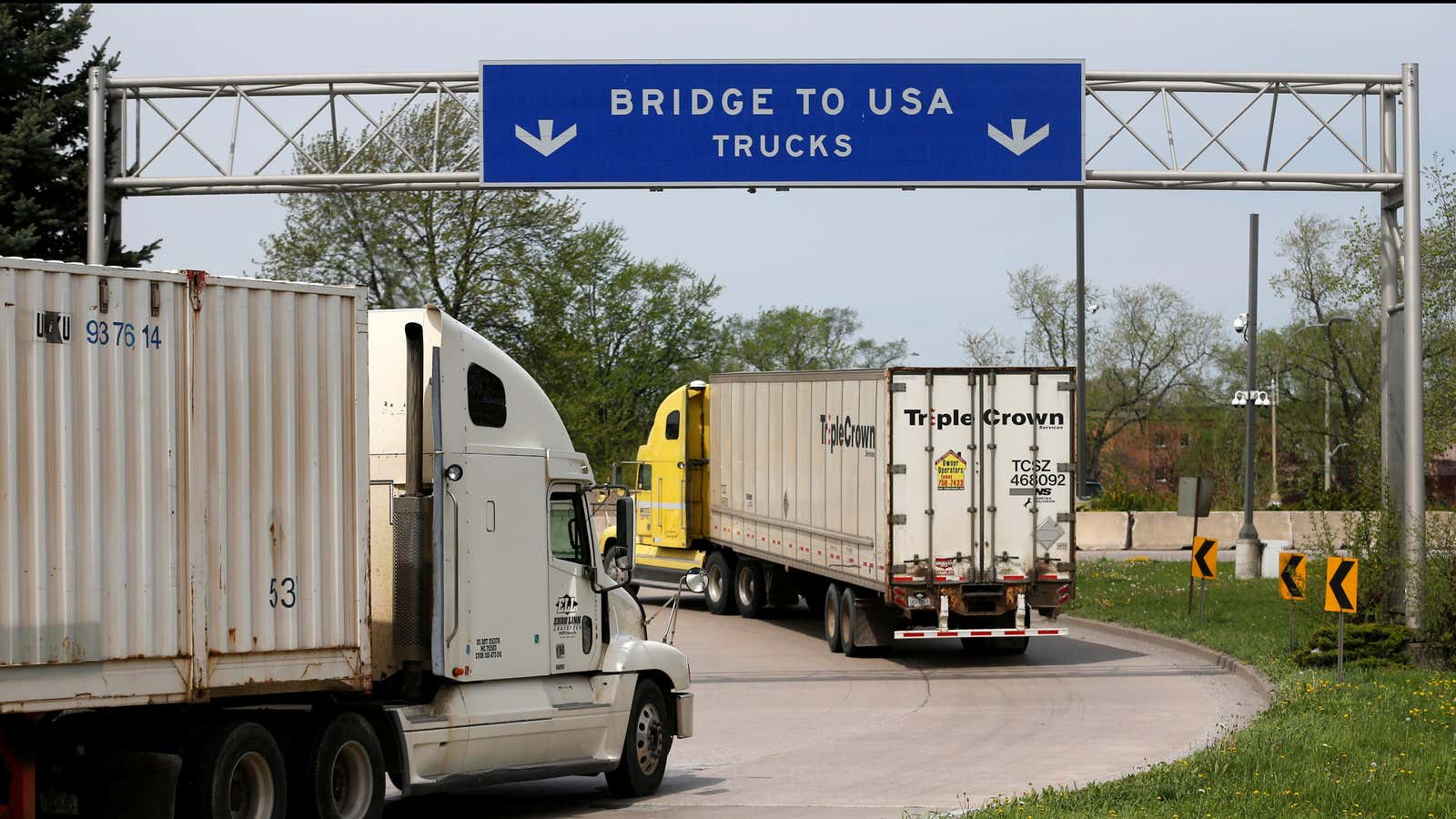US president Donald Trump has repeatedly said the North American Trade Agreement, or Nafta, is the “worst trade deal” the US, or possibly any country, has ever signed and that it needs to be changed. Today, his administration officially notified Congress that it intends to renegotiate the deal.
Still pending, however: Exactly how Trump plans to improve it.
The letter, which sets off a 90-day waiting period for talks between Nafta’s three members—Canada, the US, and Mexico—is short on details about Trump’s goals. Barely two pages long, it sticks to fairly general statements, such as improving “US opportunities under Nafta” and modernizing the trade agreement, which took effect in 1994.
“We note that Nafta was renegotiated 25 years ago, and while our economy and businesses have changed considerably over that period, Nafta has not,” wrote US trade representative Robert Lighthizer in the letter. Among the areas the US wants to update are digital trade, intellectual property, labor, and the environment.
That’s a rather milder tone than the one adopted by Trump himself. Asked recently by The Economist if he was planning a big renegotiation, he said, “Big isn’t a good enough word. Massive.” Merely modernizing Nafta might not mean anything very different from the approach taken by Mexican and Canadian officials.
“We understand the world has changed. We’ve learned a lot and we can make it better,” Mexican foreign minister Luis Videgaray said today during a press conference with US secretary of State Rex Tillerson. He called the notification letter “good news” for Mexico and said Mexico is ready to start negotiations with a “win-win” framework in mind.
There are certainly ways all three countries could benefit from an updated deal—through streamlined customs procedures and new provisions on digital trade, for instance. A revised Nafta could also bring new business opportunities. Energy, for example, was excluded from the original agreement due to nationalistic sentiment in Mexico over the state-owned oil industry. But the country has since opened up the oil sector, and Mexican officials seem willing to make it part of Nafta this time around.
US officials sounded more combative. US commerce secretary Wilbur Ross called the letter a notice to the world that “free and fair trade is the new standard for US trade deals” in a statement. He echoed Trump’s common lament of closed factories and laid-off workers. Lighthizer was more forceful still, telling reporters Trump’s “leadership on trade will permanently reverse the dangerous trajectory of American trade.”
He has two months to spell out exactly how he plans to achieve that. US negotiators have to present specific proposals to Congress 30 days before they sit down with their Nafta counterparts.
